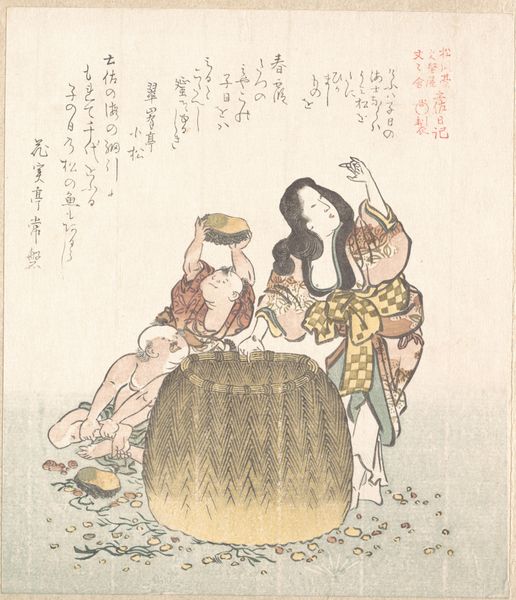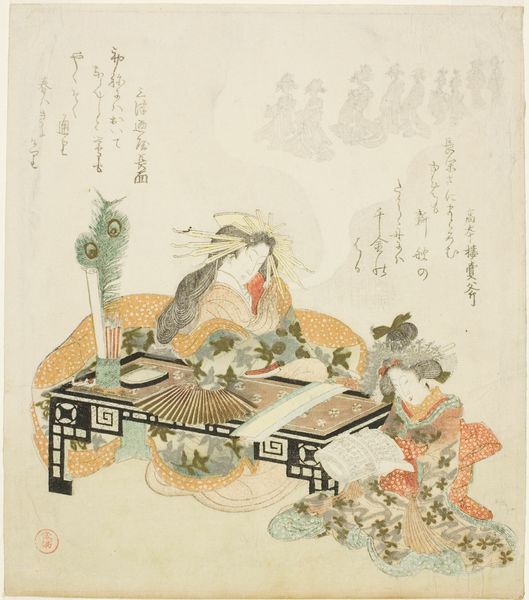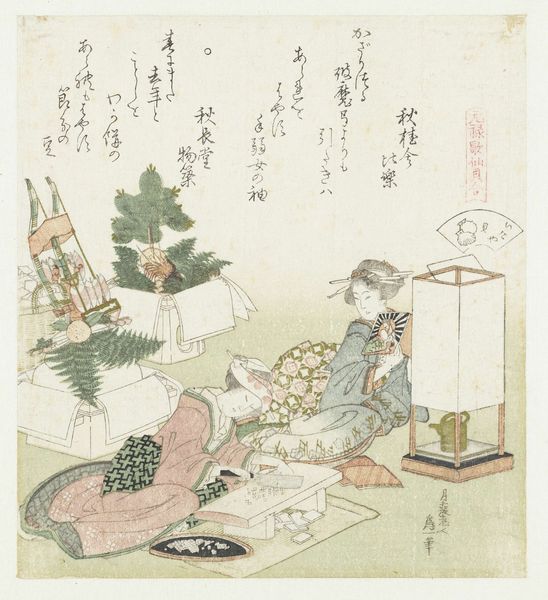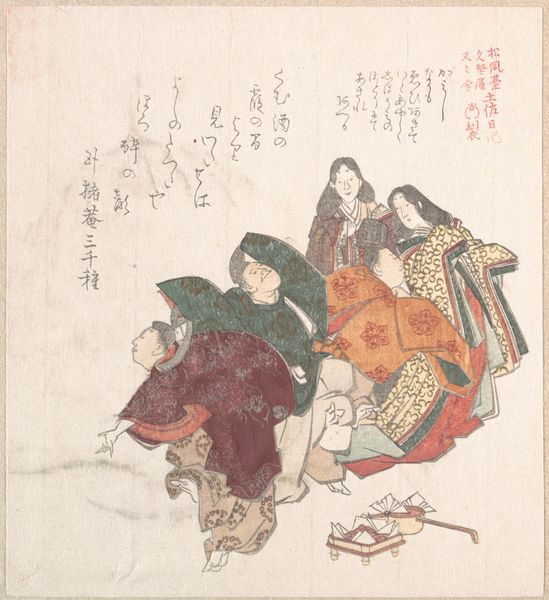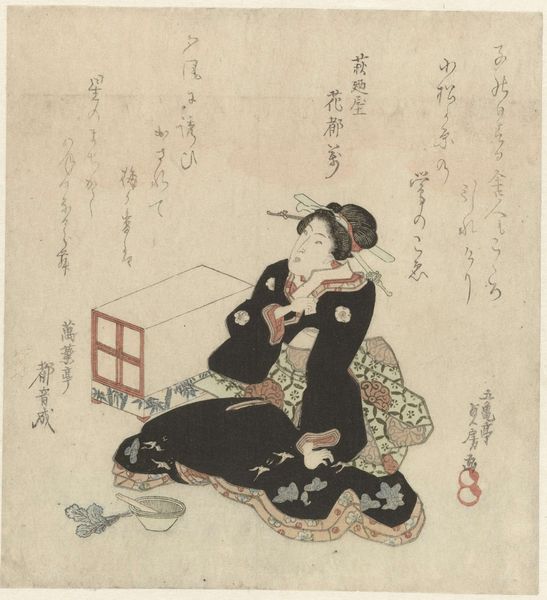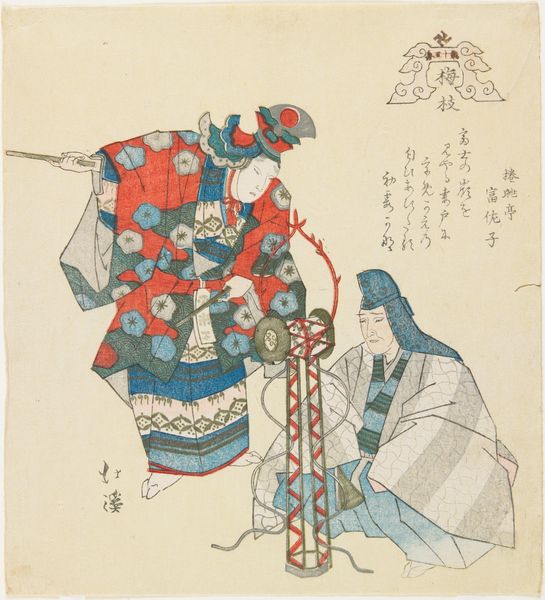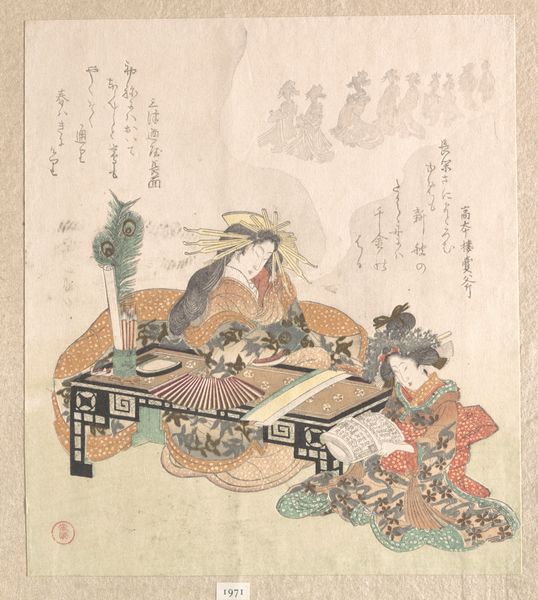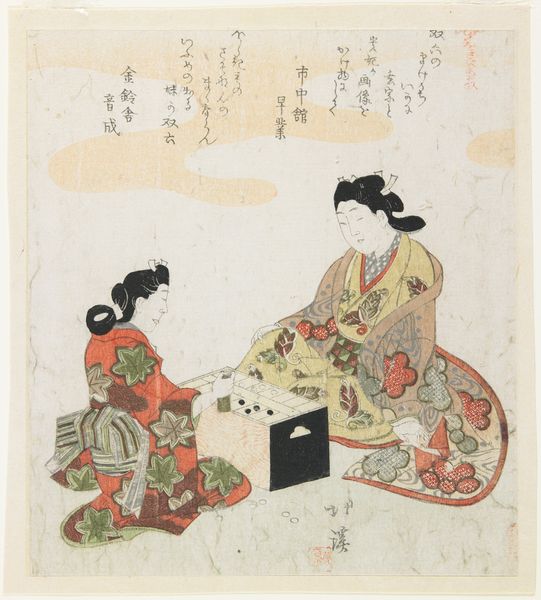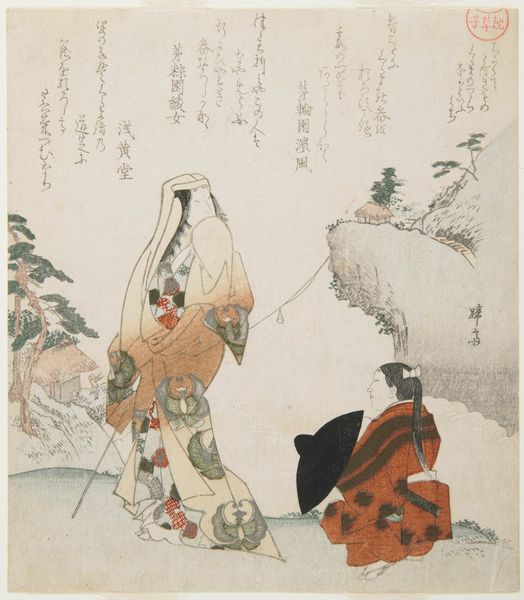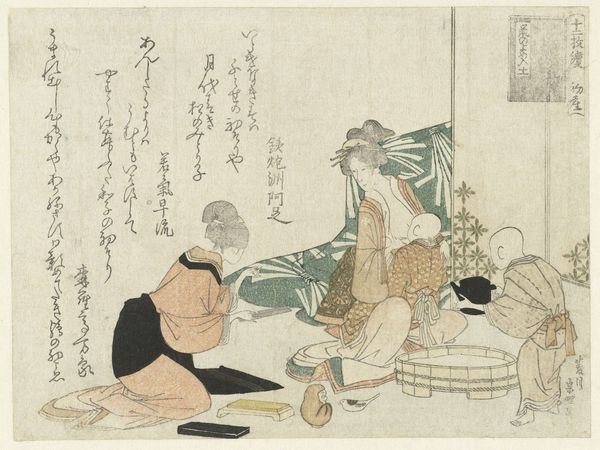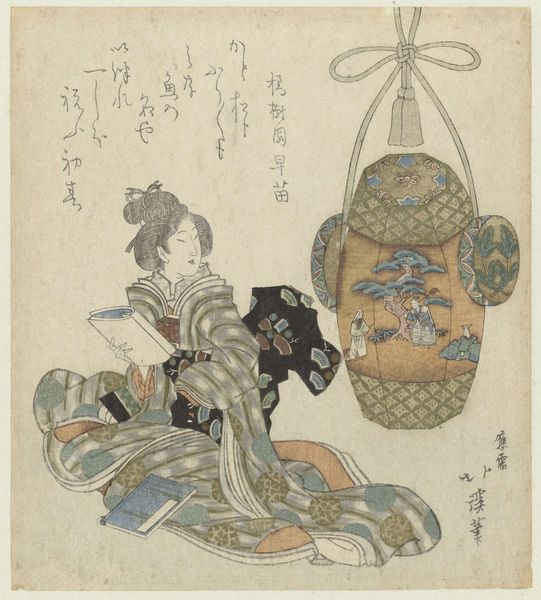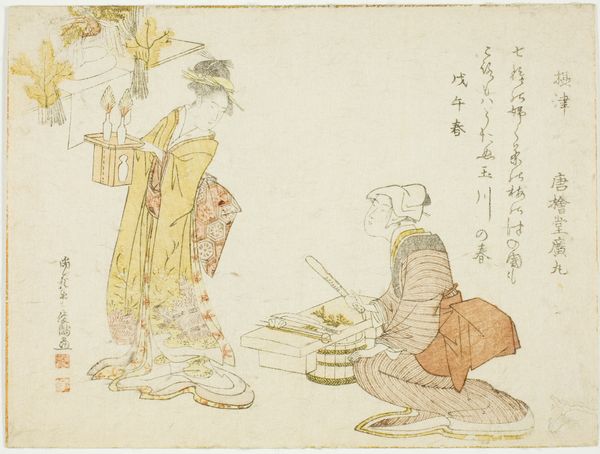
Woman and two boys gathering abalone, from the series "The Tosa Diary (Tosa nikki)" c. 1810s
0:00
0:00
#
narrative-art
# print
#
asian-art
#
ukiyo-e
#
figuration
#
genre-painting
Dimensions: 23.1 × 20.5 cm
Copyright: Public Domain
Editor: So, here we have Kubo Shunman’s *Woman and two boys gathering abalone, from the series "The Tosa Diary (Tosa nikki)"*, a print from around 1810, right? It's charming, and makes me feel kind of…peaceful. The figures seem so delicate and dreamlike. What catches your eye in this piece? Curator: That delicacy is really key, isn't it? To me, it whispers stories of the *ukiyo-e* tradition, those "floating world" images that capture ephemeral beauty. The subject, everyday people, elevates the mundane to art. See how the woman’s reaching gesture mirrors the text above, and invites you to imagine plucking blessings from above. Doesn't it almost feel like a poem? Editor: Definitely! The poetry adds another layer. What's with the abalone though? Is it symbolic? Curator: It could be! Abalone, even today, is linked to prosperity and health, a symbol of longevity, if you will, but that connection may not have existed when this was made, but it could! Think about the moment— early 19th century Japan, a time of shifting social structures. Perhaps gathering abalone together depicts commoners striving for those very ideals. Maybe there's an implicit social message about the lives and aspirations of people outside the samurai class. Do you sense any contrast between reality and the "floating world" fantasy here? Editor: Hmmm…maybe a hint of longing? The figures are idealized, but the task of gathering is still very real. Curator: Precisely. And in the art, Shunman bridges that divide with elegance. I am always struck by this tension, especially during the period of the time this was created. Editor: I hadn't thought of it that way, but seeing it as both idealised and grounded is a fascinating tension. Thanks for sharing! Curator: My pleasure! Hopefully it will create further introspection from others as well.
Comments
No comments
Be the first to comment and join the conversation on the ultimate creative platform.

